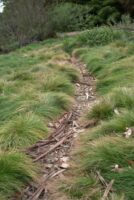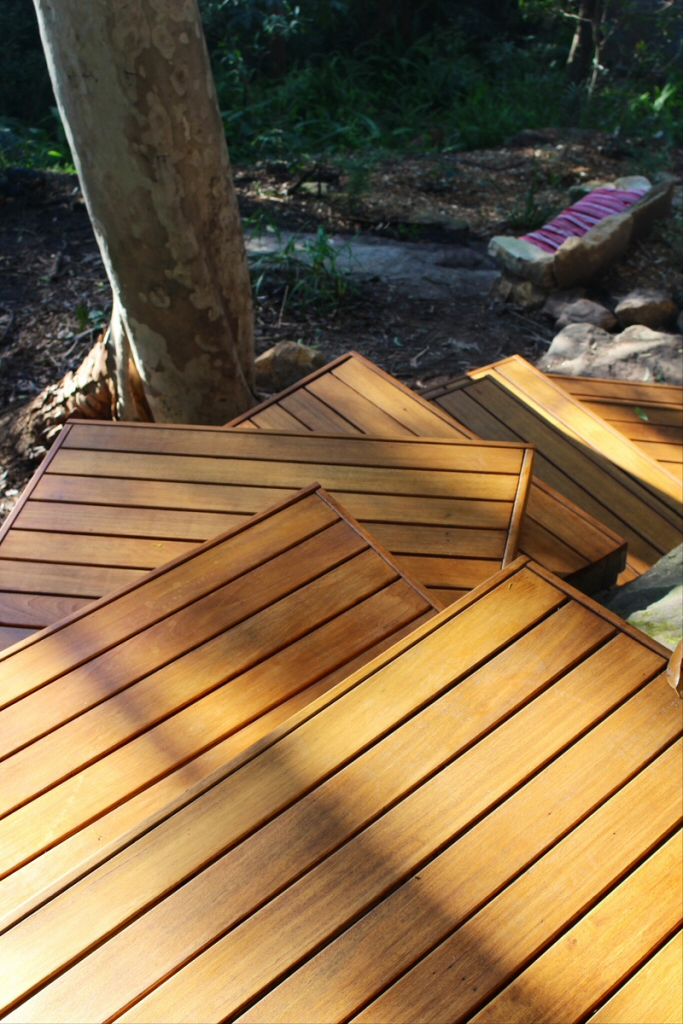by Kath Gadd from Mallee Design

A large part of planning and designing a garden is how the inhabitants and visitor will view the garden. Garden beds will need to be planned out for optimal viewing from different angles and even the smallest garden needs to have routes of access for maintenance and wandering.
Not only are pathways and open spaces within the garden for practical purposes but they also create a sense of arrival as they carry you to a destination. In this way pathways are very important because they lead the ‘eye’ before they lead the feet. Designing pathways that guide the eye to a feature or destination is a very significant garden design principle.


In the images above you can just see the gravel path way ending and the open lawn space begin, the feature trees framed at the end of the path also give a sense of destination. You are given a glimpse of what lies ahead and around the corner, this creates intrigue and makes strolling around the garden more of a discovery.
The hardscaping materials you use in your native garden to create pathways should be viewed as another ‘element’ in the garden, if used this way they can add interest, texture and contrast to the garden beds. Take some time to consider how certain plants will look mixed and matched with different materials. The textural elements of hardscaping are also an ideal way of creating balance and repetition within the garden as a whole.

Materials for creating pathways within a native garden are endless: bush gardens usually have casual pathways without borders and generally have a meandering feel.
Mulch and Gravel
Simple mulched pathways or gravel work well in these gardens, it is easy to create curves and vary the width of a path when using such materials.

The slight level change in this Native Rainforest Garden has been stepped with a single piece of timber edge. This simplifies the mulch pathway through the densely layered garden and ensures that the line of sight is obvious.
Stone
More permanent paths can be created using stone flagging, pavers or steppers; these can either be laid in concrete or set in gravel or even have some groundcover growing in between.
The image below is Castlemaine slate in Sam Cox’s garden in Eltham, this is a beautifully simple surface that has been built to last, I love the irregular edging on this path with the clean smooth texture.

Timber
Timber makes wonderful paths too, re-cycled sleepers laid on the ground act as steppers and can create a relaxed path whilst still retaining a connection to the plants around.
Building a raised deck is a great way of tackling difficult level changes within a pathway, it is also a good way to protect the garden from compaction. Timber platforms can be built in awkward areas making access easy and safe.
Green Pathways
Where foot traffic will be kept to a minimum then green surfaces can work beautifully, they keep the soft element strong in the landscape and provide a lovely surface to walk on barefoot. Native groundcovers and grasses work well in these situations, as does good old turf. In the image below Microlaena stipoides has been grown in a difficult shady position and serves well as a path surface, it suppresses weeds whilst retaining a soft weeping habit.
Kidney weed or Dichondra repens is another excellent steppable groundcover to use in foot traffic areas.

A simple pathway lined with discarded Eucalyptus bark, this works well as a single person path, it creates an intimate feel and appears completely natural.
Things to consider when choosing a pathway material:
How often will the path be used?
Who is going to use it?
Does it need to fit several people strolling or just one?
Does it need to be wheel ‘friendly’ ie: will you need to fit garbage bins, wheel-barrows or wheelchairs?
How much rain does the area get? ie: will loose materials be washed away?
Are there materials onsite that you could re-purpose into the pathway?
Don’t be afraid to experiment!
The pathway below has been created using re-cycled concrete as steppers set into crushed decomposed granite.

One other pointer, try to repeat your chosen pathway materials throughout the garden. By doing this the garden will have a harmonious feel and all sections will be tied in together by using a continuous material palette.
And last but not least have some fun! Using hard landscaping materials in your garden is simply another way to express your creativity and enhance your garden.
All images copyright Mallee Design







